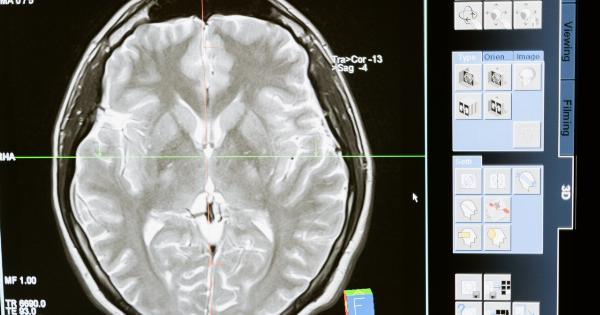Obesity is a growing problem in many countries, and it is not just about looking good or feeling confident – being overweight or obese can cause serious health problems, including an increased risk of multiple cancers.
Studies suggest that carrying excess body weight puts extra stress on cells and organs, leading to inflammation and other harmful processes that can ultimately cause cancer. In this article, we will explore the link between obesity and cancer, which types of cancer are most strongly associated with excess weight, and what people can do to reduce their risk of cancer and other health issues related to obesity.
Obesity and Cancer Risk: What the Research Says
For several decades, researchers have been investigating the relationship between obesity and cancer risk.
Some of the earliest studies in the 1980s and 1990s showed that obese people had a higher risk of cancer of the colon, breast, endometrium, kidney, and other organs compared to people of normal weight. Since then, many more studies have been conducted, with increasingly sophisticated methods to take into account other factors that may influence cancer risk, such as age, gender, smoking, physical activity, and diet.
One of the most comprehensive studies on this topic was published in 2016, in which a group of researchers analyzed data from over 200 studies involving more than 36 million people from around the world.
The results showed that obesity was strongly associated with an increased risk of 13 types of cancer, including:.
- Endometrial cancer
- Breast cancer (postmenopausal)
- Breast cancer (premenopausal)
- Colorectal cancer
- Kidney cancer
- Ovarian cancer
- Thyroid cancer
- Cervical cancer
- Liver cancer
- Biliary tract cancer
- Pancreatic cancer
- Gastric cardia cancer
- Multiple myeloma
These associations were found to be independent of other risk factors and were most pronounced in people who were severely obese (BMI 35 or higher). The authors estimated that excess body weight could account for up to 8% of all cancer cases worldwide.
How Does Obesity Increase Cancer Risk?
The mechanisms by which excess body weight leads to cancer are not yet fully understood, but several theories have been proposed. Here are some of the leading hypotheses:.
1. Hormone balance disruption
Adipose tissue (fat) is not just a passive energy storage; it also secretes various hormones and cytokines (cell-signaling proteins) that can affect the body’s metabolism and immune system.
For example, obese people tend to have higher levels of insulin, insulin-like growth factor-1 (IGF-1), and estrogen, which can promote the growth and proliferation of cancer cells in certain organs. This may partly explain why postmenopausal breast cancer and endometrial cancer are more common in obese women, as these cancers are strongly influenced by estrogen levels.
2. Chronic inflammation
Obesity is associated with chronic low-grade inflammation throughout the body, as fat cells release pro-inflammatory molecules such as interleukin-6 (IL-6), tumor necrosis factor-alpha (TNF-alpha), and C-reactive protein (CRP).
This inflammation can damage DNA, impair cell function, and create an environment that is conducive to cancer development. Indeed, many types of cancer are characterized by high levels of inflammation, and certain drugs that target inflammation have shown promise in cancer prevention and treatment.
3. Insulin resistance and hyperinsulinemia
Obesity is strongly linked to insulin resistance, a condition in which the body’s cells become less responsive to insulin’s action, leading to high blood glucose levels and compensatory hyperinsulinemia (excessive insulin secretion).
This metabolic imbalance can cause cells to grow and divide in an uncontrolled way, increasing the risk of cancer. It has been suggested that type 2 diabetes, which often co-occur with obesity, may contribute to cancer development through similar mechanisms.
4. Oxidative stress and DNA damage
Adipose tissue may generate oxidative stress, which occurs when there is an imbalance between free radical production and antioxidant defense.
Oxidative stress can damage cellular components, including DNA, and impair the body’s ability to repair such damage. This can lead to mutations and genomic instability, which are hallmarks of cancer. Obese people may also have lower levels of antioxidants such as vitamin C and vitamin E, which could exacerbate the oxidative damage.
Which Types of Cancer Are Most Affected by Obesity?
While obesity has been associated with an increased risk of many types of cancer, some organs are more vulnerable than others. Here are the cancers that are most strongly linked to obesity, according to various studies:.
1. Endometrial cancer
Endometrial cancer, which affects the lining of the uterus, is the cancer type that has the strongest association with obesity.
Obese women have two to four times higher risk of developing endometrial cancer compared to women of normal weight, and the risk increases further with severity and duration of obesity. This may be due to the estrogen-promoting effect of adipose tissue, as well as insulin resistance and inflammation.
2. Breast cancer (postmenopausal)
Postmenopausal breast cancer, which accounts for about 75% of all breast cancer cases, is also strongly influenced by obesity. Women with a BMI over 30 have a 30-60% higher risk of developing breast cancer than those with a BMI under 25.
The explanation may involve the hormone disruption hypothesis mentioned above, although the exact mechanisms are not yet fully understood. The risk of premenopausal breast cancer, however, appears to be similar regardless of BMI status.
3. Colorectal cancer
Colorectal cancer is the third most common cancer in the world and is strongly associated with lifestyle factors such as diet, physical activity, and obesity.
Obese individuals have a 30-40% higher risk of developing colorectal cancer than normal-weight individuals, and the risk rises with increasing BMI and abdominal fatness. The mechanism underlying this association may involve inflammation, insulin resistance, and oxidative stress.
4. Kidney cancer
Kidney cancer, which arises from the cells of the renal tubules, is also more common in overweight and obese people than in lean individuals.
The risk of kidney cancer increases by 25-30% for every 5-point increase in BMI, and the risk is twice as high in people with a BMI over 35 compared to those with a BMI under 25. One possible explanation is that obesity leads to chronic inflammation and oxidative damage in the kidneys, which can affect the DNA repair mechanisms and promote tumor formation.
5. Pancreatic cancer
Pancreatic cancer is one of the deadliest cancers, with a 5-year survival rate of less than 10%. Obesity is a significant risk factor for pancreatic cancer, possibly due to insulin resistance, inflammation, and abnormal fat metabolism in the pancreas.
Studies have shown that obese individuals have almost twice the risk of pancreatic cancer compared to those of normal weight, and that abdominal obesity (i.e., excess fat around the waist) is a stronger predictor of risk than overall obesity.
What Can People Do to Reduce Their Cancer Risk?
The good news is that obesity-related cancer risks are largely preventable through lifestyle modifications such as weight loss, physical activity, and healthy eating habits. Here are some steps that people can take to reduce their risk of cancer:.
1. Aim for a healthy weight
By maintaining a BMI within the normal range of 18.5-24.9, people can significantly lower their risk of cancer and other chronic diseases. Even a modest weight loss of 5-10% can have a positive impact on health.
Losing weight may require a combination of calorie reduction, regular exercise, and behavioral strategies to overcome emotional and environmental cues that lead to overeating.
2. Engage in regular physical activity
Physical activity has numerous health benefits, including reducing the risk of cancer.
The American Cancer Society recommends at least 150 minutes of moderate-intensity or 75 minutes of vigorous-intensity exercise per week, as well as strength training for all major muscle groups at least twice per week. Exercise can help control weight, improve insulin sensitivity, reduce inflammation, and enhance the body’s immune function.
3. Follow a healthy diet
Eating a diet rich in vegetables, fruits, whole grains, and lean protein sources, and low in processed foods, saturated and trans fats, and added sugars, can help promote overall health and reduce the risk of obesity and cancer.
For example, the Mediterranean diet, which emphasizes plant-based foods, healthy fats, and moderate alcohol consumption, has been associated with lower cancer incidence and mortality. Avoiding excessive alcohol intake is also important, as alcohol is a risk factor for several cancers, including breast, liver, and colorectal cancer.
4. Avoid tobacco and protect against UV radiation
Smoking is the leading cause of preventable cancer death worldwide, and it is also a major cause of heart disease, stroke, respiratory diseases, and other health problems.
Quitting smoking and avoiding exposure to secondhand smoke can greatly reduce the risk of lung cancer and other cancers. Similarly, protecting the skin from excessive UV radiation, such as by using sunscreen, wearing protective clothing, and seeking shade or avoiding tanning beds, can prevent skin cancer.
Conclusion
Obesity is a complex issue that affects millions of people worldwide, and its impact on cancer risk should not be overlooked.
The evidence suggests that carrying excess weight increases the risk of several cancers, particularly those of the endometrium, breast, colon, kidney, and pancreas. The mechanisms by which obesity promotes cancer are not fully understood but may involve hormone imbalance, chronic inflammation, insulin resistance, oxidative stress, and DNA damage.
Fortunately, lifestyle interventions such as weight loss, regular exercise, and healthy diet can significantly reduce cancer risk. By adopting a healthier lifestyle, people can not only improve their physical appearance and well-being but also prevent many chronic diseases and increase their lifespan.




























